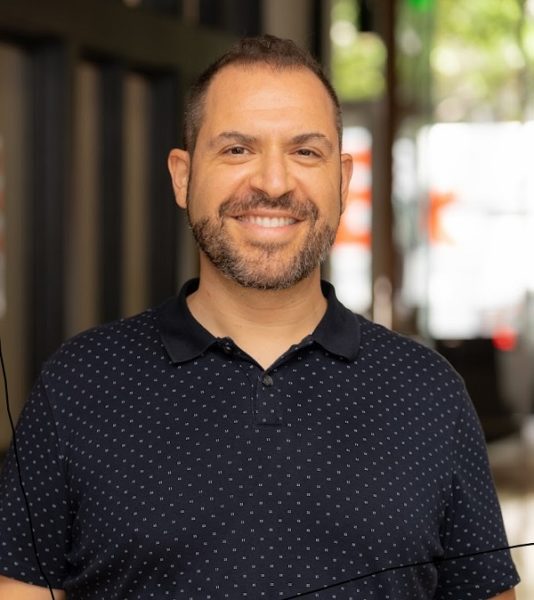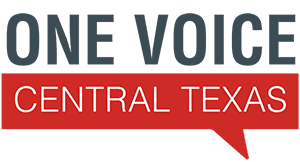
-
Name
Lonny Stern -
Title
Executive Director -
Organization Name
Movability -
Number of Years as Executive Director
I have been serving as the Executive Director of Movability for 1 year. I have previously served in several Community Engagement roles for the Austin Transit Partnership and CapMetro. Before that, I had an extensive career in the non-profit sector, having served at Skillpoint Alliance, Every Texan, Hope Street Group, the Texas House Research Organization, the Austin Gay & Lesbian International Film Festival, 91.7 FM – KO-OP Radio, and Project Transitions, in addition to various board positions.
-
What does your organization do?
Movability is Central Texas’ transportation management association (TMA), working with individuals and organizations to build the region around people, not cars.
Our vision is to encourage affordable mobility solutions that reduce congestion and protect air quality to sustain the economic vitality of our region. -
How did you become interested in this work?
I was exploring what I could do as an individual to impact the climate crisis. While I had studied energy, transportation and urban policy as a graduate student, I quickly realized that transportation was a major driver of air quality and energy consumption and offered the best opportunity for each of us to make a difference. Even still, decisions about how we travel are largely dependent on how we design our cities. If we don’t build communities where we can easily walk, bike or take transit to a convenience store, to the doctor, to buy groceries, or get to work or school, then we’re going to make the rational decision to drive.
Part of my work is tapping into the shared desire for clean air and less traffic congestion. I enjoy helping people discover the joy of trying something new (like taking the bus or trying a scooter or bikeshare for the first time) and sharing the ride (like finding a carpool buddy or joining a vanpool). After all, we’re not stuck in traffic: we are traffic, so finding ways to take ourselves off the road – even once or twice a week – can make a huge impact on our quality of life and the long-term vitality of our region. -
What drives your passion?
I’m a big believer in bottom-up governance. Like UT Austin says: What happens here changes the world. My hope is that the work we do to reduce congestion and protect air quality in Central Texas will become a best practice and inspire positive changes in other communities across the nation and, eventually, across the world. -
Do you have a mentor or a role model?
Yes. I’ve had several mentors and role models over the years. My maternal grandmother inspired my sense of style, intellectual pursuits, and passion for reading. Former City Manager Toby Futrell inspired me to plant roots in Austin, since I was passionate about building a sustainable city – and she made it clear that working in a small, growing city would afford opportunities and access that would not be available in a larger city, where the decisions had already been made and outcomes had already been predetermined.
I was also mentored by several co-workers and bosses, who grew to be close friends: Jay Barbee, a retired banker who helped orient me in my earliest days in Austin and had a wicked sense of humor; Margo Dover, who taught me that the personal connection is the most essential part of being an effective leader and fundraiser; and Jackie Nirenberg, who gave me the opportunity to steer my career into the transportation sector and provided the best example of flat organizational leadership. -
What's the biggest challenge in your work?
Shifting the culture of a Sunbelt city that is used to driving alone to get everywhere. -
What's the best advice that you have ever received?
Buy a home. I moved to Austin in 1999, and a friend told me that I could leverage the $10,000 I had saved with an FHA loan to purchase a $100,000 house (which was still possible in Austin back then). It was the best decision I ever made, and it solidified my journey as an Austinite. -
What are your top tips for new Executive Directors?
1) Set a 1:1 meeting with all your donors, members, partners, staff and board members. They deserve a chance to meet you separately from a public event, and you will benefit from learning more about their priorities, why they are involved with your organization, and any concerns they may have.
2) You can’t change the weather; you can only dress for it. Maybe you aren’t happy with the circumstances surrounding your organization. For example, you’re running and workforce development agency and we’re nearing full employment. Well, you can’t really change that (and do you really want to?). Instead, think about how you can still provide value in that environment. Are there new partnerships you should pursue? Are there programs that should be put on the shelf until they are needed again? Are there new programs that could take their place? Don’t try to make the circumstances conform to your needs; consider how you can adjust to the new normal.
3) Fundraising is about building relationships. As a fundraiser, it is tempting to chase every rainbow, but your time is best spent focusing on your existing funders and ensuring that the relationships are strong. Find out what motivates their participation. Find out what programs you offer that are of interest. If you go to lunch with a funder, spend most of the time listening. (You’ll know you’re doing it right if you finish your meal first; if they finish first, it means you’re talking too much!) Not sure what to say? Find out where they grew up, went to school. Do they have kids? Are they married? What kind of foods do they like? Were they on vacation recently?
Funders are people too. They aren’t just a blank check that you fill out a few weeks before your special event or program launch. If you become close with your funders, they will help you spread the word when you need volunteers. It is those same people who will introduce you to other potential funders down the road. While it is tempting to spend your time looking for new donors, I’d recommend spending no more than 20% of your time searching for them. After all, who is more likely to give you $20,000 next year? A donor who is giving you $10,000 today or a new prospect you just met?
Anything Extra To Add?
To learn more about Movability Texas visit their website here. Please see our Archive of Featured Members to read about other members.
